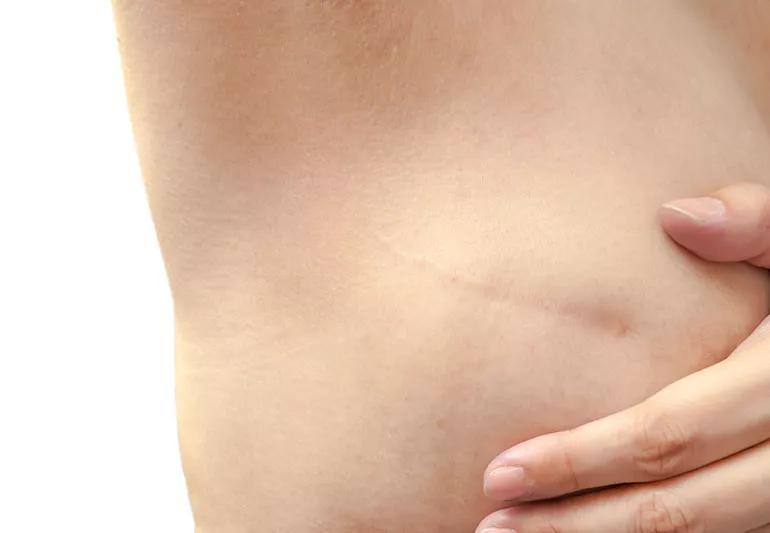Work with your doctors to find the best approach for breast reconstruction

We understand how traumatic the thought of a mastectomy can be for people with breast cancer. If your doctors have shared with you that your best chance of treatment and remission includes a mastectomy, take time to explore your options before immediately deciding on breast reconstructive surgery.
Advertisement
Cleveland Clinic is a non-profit academic medical center. Advertising on our site helps support our mission. We do not endorse non-Cleveland Clinic products or services. Policy
Reconstructive surgery can boost your self-confidence and improve your body image. But you’ll want to learn more before deciding which reconstruction option is best for you. But don’t put off your research, as reconstruction can sometimes be done during your mastectomy.
“There are two main reconstructive options,” says plastic surgeon Risal Djohan, MD. “You can get artificial breast implants or opt to have the surgeon recreate your breasts with your own fat tissue.”
“Fortunately, thanks to government regulations and support for breast cancer services, most insurance providers now pay for reconstructive surgery as part of cancer treatment,” Dr, Djohan says.
In many cases, breast implants require a two-part procedure. “The surgeon may first need to insert a temporary tissue expander to create space underneath the layer of skin and fat for the implant,” Dr. Djohan explains.
A few months after that, your physician will remove the expander and insert an implant in the newly created pocket.
“For some patients, however, doctors can immediately place the implant,” Dr. Djohan notes.
“Depending on evaluation of the patient meeting certain criteria, we certainly can skip a step of the operation and get everything done at the same time,” Dr. Djohan says.
Advertisement
You have two options for breast implants:
“There are pros and cons to breast implants,” says Dr. Djohan. In making your decision, it’s important to think these points over carefully and talk with your surgeon if you have questions.
Dr. Djohan lists important points about breast implants below.
Autologous tissue reconstruction involves using abdominal fat, skin and fatty tissue from your lower abdomen or other areas, such as your back or thighs, to recreate a breast.
There are two kinds of autologous tissue reconstruction:
Dr. Djohan also shares the pros and cons of autologous tissue reconstruction.
Advertisement
Autologous tissue reconstruction is not recommended in some circumstances, such as if you’ve had previous abdominal surgeries, have obesity, smoke or have a history of blood clots.
In the past, women who had mastectomies waited until after their cancer treatment and surgeries before tackling breast reconstruction. Today, that’s not always the case.
Now, there are options for immediate reconstruction. In this case, the first stage of reconstructive surgery occurs at the same time as your mastectomy. This requires close coordination between the cancer surgery and plastic surgery teams.
In some cases, single-stage reconstruction is possible. Your surgeon inserts implants or fat tissue without additional reconstructive surgeries. “Some women find this option makes recovery easier, socially and emotionally,” Dr. Djohan says.
However, if you need radiation and want to use your own tissue for reconstruction, your surgical team might suggest a mixed approach. In this case, your surgeon would insert tissue expanders during your mastectomy. This prepares your breast skin for further reconstruction after your treatment is complete.
Advertisement
“Ultimately, it’s best to discuss your goals for reconstructive surgery with your healthcare providers,” Dr. Djohan says.
“If you have a mastectomy, you should choose a reconstructive surgery that makes you feel most comfortable,” he says. “A conversation with your doctor and plastic surgeon can help guide your choices so you make the most appropriate choice for you.”
Advertisement
Learn more about our editorial process.
Advertisement

Chemo cold caps may help you keep more of your hair during therapy

Breast cancer’s growth rate depends on its type, stage, grade and more

Breast cancer typically spreads to your lymph nodes first, and can travel to your lungs, bones and more

Many breast cancer survivors have babies — talk to your provider before treatment to understand all of your options

Rates of early-onset breast, colorectal and GI cancers are increasing, but preventive care and a healthy lifestyle can help reduce your risk

A second opinion can confirm your diagnosis and treatment plan and help you feel more confident about what’s next

They’re different versions of the same tool, all with the goal of early detection of breast cancer

A second appointment is common, especially after your first mammogram and if you have dense breasts — but it doesn’t necessarily mean anything is wrong

If you’re feeling short of breath, sleep can be tough — propping yourself up or sleeping on your side may help

If you fear the unknown or find yourself needing reassurance often, you may identify with this attachment style

If you’re looking to boost your gut health, it’s better to get fiber from whole foods